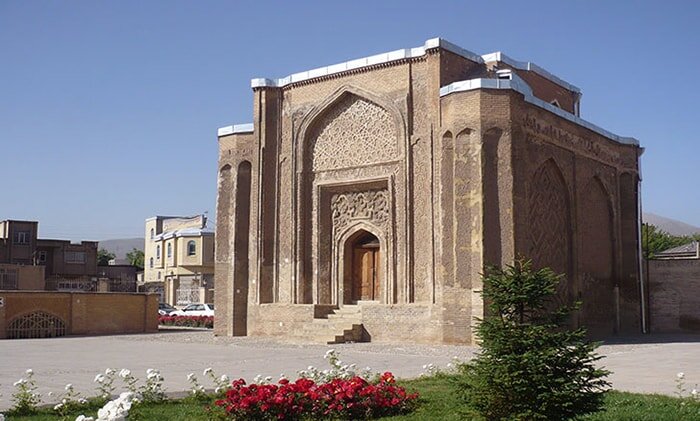12th-century structure in Hamedan being restored to former glory

TEHRAN-A restoration project has recently been commenced on the 12th-century Gonbad-e Alavian (“Alavian Dome”) in the west-central Hamedan province, the deputy provincial tourism chief has announced.
A budget of 400 million rials ($1,500) has been allocated to the project, IRIB quoted Maryam Mokhtar-Mousavi as saying on Wednesday.
The monument, which is a prime example of Persian-Islamic architecture of the time, was inscribed on the national heritage list in 1931.
Its brick tower remains famous for the whirling floral stucco added in the Ilkhanid Mongol era; this ornamentation is described by British travel writer Robert Byron in his travelogue “The Road to Oxiana”.
In its small cellar, there are tombs of two elders of the Alavian family. The interior area is formed of six rooms with arches. Cube-shaved graves covered with turquoise bricks are in the center.
A rectangular plaque with stucco honeycomb patterns and flower motifs is hung above the entrance of the structure. The outer frame of this plaque bears stucco reliefs of Quranic inscriptions in the Kufic calligraphy hand.
Known in classical times as Ecbatana, Hamedan was one of the ancient world’s greatest cities. Pitifully little remains from antiquity, but significant parts of the city center are given over to excavations. Ecbatana was the capital of Media and subsequently a summer residence of the Achaemenian kings who ruled Persia from 553 to 330 BC.
Hamadan has had many names: it was possibly the Bit Daiukki of the Assyrians, Hangmatana, or Agbatana, to the Medes, and Ecbatana to the Greeks. One of the Median capitals, under Cyrus II (the Great; died 529 BC) and later Achaemenian rulers, it was the site of a royal summer palace.
About 1220, Hamedan was captured by the sweeping army of Mongol invaders. In 1386 it was sacked by Timur (Tamerlane), a Turkic conqueror, and the inhabitants were massacred. It was partly restored in the 17th century and subsequently changed hands often between Iranian ruling houses and the Ottomans.
Sitting on a high plain, Hamedan is graciously cool in August but snow prone and freezing from December to March. In summer the air is often hazy. Ali Sadr cave, Ganjnameh inscriptions, Avicenna Mausoleum, Hegmataneh hill, Alaviyan dome, Jameh mosque, and St. Stephanos Gregorian Church are amongst Hamedan’s attractions to name a few.
ABU/AFM

Leave a Comment